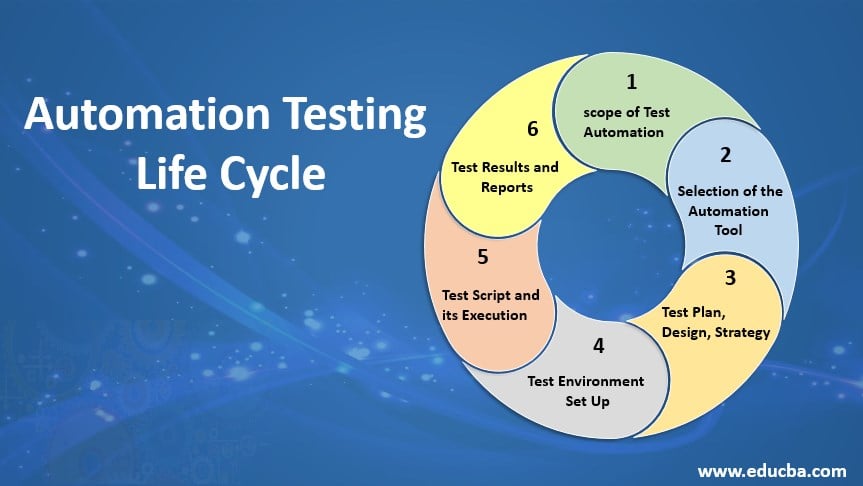Choosing the Right Tools for Effective Automation Testing Solutions
Wiki Article
From Guidebook to Automated Screening: A Comprehensive Guide to Transitioning Smoothly and Efficiently
In the world of software application testing, the change from handbook to automated procedures has become a significantly important transition for companies seeking to boost effectiveness and precision in their screening practices. The journey from guidebook to automated testing is not without its obstacles, but when come close to tactically and with a clear strategy in mind, the benefits can be significant.Benefits of Automated Checking
Automated testing uses countless benefits, boosting efficiency and accuracy in software application advancement processes. Automated examinations can be run concurrently on numerous tools and running systems, considerably speeding up the screening stage contrasted to hand-operated screening.Moreover, automated testing guarantees a higher level of accuracy in discovering flaws. Since automated tests follow predefined manuscripts, human error is minimized, causing even more dependable test results. Consistency in testing is also improved, as automated tests perform the same steps specifically each time they are run. This uniformity is crucial in ensuring that all functionalities of the software are extensively checked, minimizing the chance of unseen insects sliding with to production.
Choosing the Right Tools
Firstly, analyze your goals and demands. Understand the scope of your task, the modern technologies involved, and the skill set of your group. This evaluation will assist you determine the functions and capabilities you require in your screening devices.
Secondly, consider the compatibility of the devices with your existing procedures and systems. Seamless integration with your existing software program growth lifecycle is vital to make certain a smooth shift to automation.
Furthermore, evaluate the scalability and adaptability of the tools. As your screening requires develop, the devices must be able to adjust and suit changes effectively.
Finally, aspect in the assistance and area around the devices. When applying automated testing, durable support and an energetic user area can provide beneficial resources and help. By thoroughly considering these facets, you can choose the right devices that align with your needs and set the stage for an effective transition to automated testing.
Writing Efficient Test Scripts

When crafting test manuscripts, it is necessary to consider the details demands of the software being examined and guarantee that the manuscripts deal with all critical performances. Descriptive and clear calling conventions for test scripts and examination cases can improve readability and maintainability. Additionally, integrating error handling devices within the test manuscripts can aid in determining and addressing problems without delay.
Additionally, organizing test manuscripts into modular parts can boost reusability and scalability, minimizing redundancy and boosting efficiency in test manuscript upkeep. Regular evaluations and updates to check scripts are crucial to equal advancing software requirements and performances. By complying with these concepts, testers can develop robust and effective examination scripts that add dramatically to the success of automated testing processes.
Integrating Automation Into Workflows
Efficient combination of automation tools into existing process enhances procedures and boosts efficiency within software application growth cycles. When incorporating automation into workflows, it is essential to determine repeated tasks that can be automated to save time and decrease human error. By effortlessly incorporating automated screening devices like Selenium imp source or Appium into the software development lifecycle, teams can achieve faster responses on code adjustments, leading to quicker pest discovery and resolution. This combination enables for constant testing throughout the development procedure, making certain that any kind of concerns are recognized early, leading to higher software program top quality. Furthermore, automation can be utilized to set off tests automatically after each code devote, supplying instant recognition and maximizing testers to concentrate on more facility situations. Proper assimilation of automation tools requires collaboration in between development, screening, and operations teams to develop a unified workflow that enhances efficiency and performance in delivering top notch software items.Guaranteeing a Smooth Change
Efficiently transitioning go to my blog to automated testing includes careful preparation and careful execution to lessen disturbances and optimize effectiveness in the software program development process - automation testing. To make sure a smooth change, it is essential to start by conducting a detailed analysis of the existing screening procedures and recognizing locations where automation can bring one of the most substantial benefits. Engaging with all stakeholders early in the procedure, consisting of designers, testers, and job supervisors, is vital for amassing assistance and buy-in for the automation effortCommunication is crucial during this shift phase. Clear communication of the goals, benefits, and expectations of automated testing aids to take care of any kind of resistance or problems that might develop. Furthermore, offering sufficient training and resources for group participants to upskill in automation tools and strategies is crucial for making sure a successful transition.

Conclusion
Finally, transitioning from handbook to automated screening offers various benefits, including enhanced effectiveness and dependability. By choosing the proper tools, composing efficient test scripts, and integrating automation perfectly into workflows, organizations can make sure a effective and smooth shift. It is necessary to accept automation as a useful possession in software application testing processes to enhance overall quality and productivity.In the world of software program screening, the change from manual to automated processes has actually ended up being an increasingly crucial change for companies looking for to improve efficiency and precision in their screening practices. Automated navigate to this website examinations can be run simultaneously on numerous tools and operating systems, dramatically speeding up the screening phase contrasted to manual screening. Consistency in testing is additionally enhanced, as automated tests implement the exact same steps specifically each time they are run.To make sure the successful execution of selected screening tools, the creation of efficient test manuscripts plays an important role in confirming the performance and efficiency of automated processes - automation testing. By adhering to these principles, testers can develop robust and effective test manuscripts that contribute significantly to the success of automated testing procedures
Report this wiki page